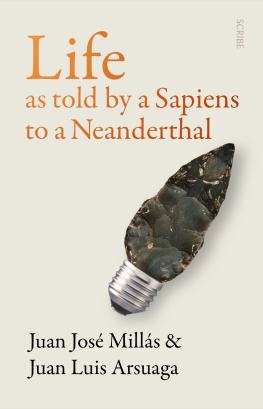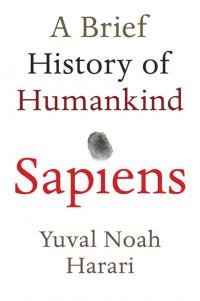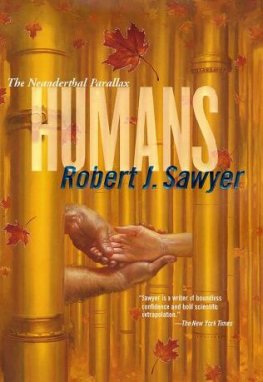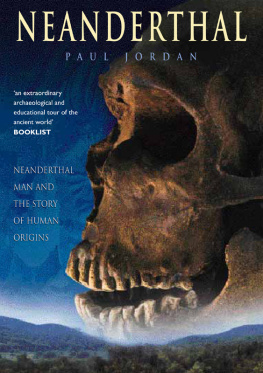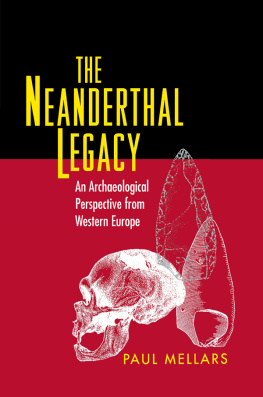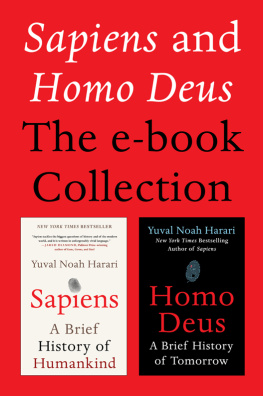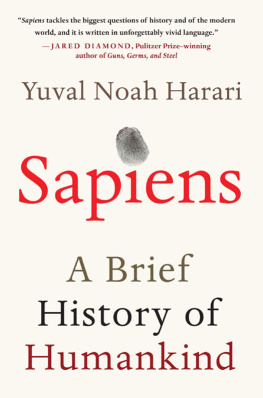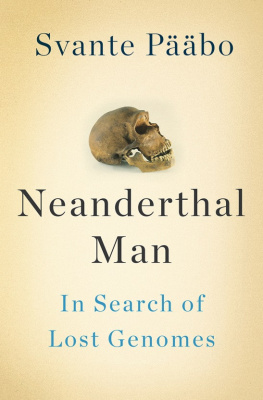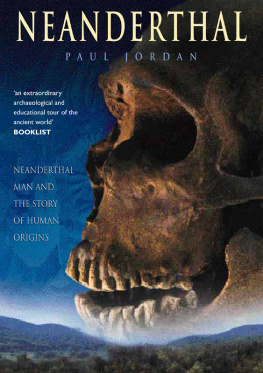
Life as told by a Sapiens to a Neanderthal
Juan Jos Mills is considered one of the most important voices in contemporary Spanish literature, and is a prolific bestselling novelist and short-story writer. He is the winner of the Premio Nadal, the Premio Nacional, and the Premio Planeta. As a journalist, he is a multi-award-winning regular contributor to both El Pais and the Prensa Iberica newspaper group. His work has been translated into more than twenty languages, and includes the novels From the Shadows and None Shall Sleep .
Juan Luis Arsuaga is a professor of paleontology at the Complutense University of Madrid and the director of the Human Evolution and Behaviour Institute. He is a member of the American National Academy of Sciences and of the Muse de lHomme of Paris, a visiting professor at University College London, and a co-director of excavations at the Sierra de Atapuerca World Heritage site. He is a regular contributor to Nature , Science , and the American Journal of Physical Anthropology , is the editor of the Journal of Human Evolution , and lectures at the universities of London, Cambridge, Berkeley, New York, Tel Aviv, and Zurich, among others. The recipient of many national and international awards, he is the author of more than a dozen works.
Scribe Publications
18-20 Edward St, Brunswick, Victoria 3056, Australia
2 John St, Clerkenwell, London, WC1N 2ES, United Kingdom
3754 Pleasant Ave, Suite 100, Minneapolis, Minnesota 55409, USA
First published in Spain by Alfaguara as La vida contada por un sapiens a un neanderthal in 2021
Published by Scribe in 2022
Text copyright Juan Jos Mills and Juan Luis Arsuaga 2021
Translation copyright Thomas Bunstead and Daniel Hahn 2022
All rights reserved. Without limiting the rights under copyright reserved above, no part of this publication may be reproduced, stored in or introduced into a retrieval system, or transmitted, in any form or by any means (electronic, mechanical, photocopying, recording or otherwise) without the prior written permission of the publishers of this book.
The moral rights of the author and translator have been asserted.
Scribe acknowledges Australias First Nations peoples as the traditional owners and custodians of this country, and we pay our respects to their elders, past and present.
978 1 922585 04 2 (Australian edition)
978 1 914484 02 5 (UK edition)
978 1 957363 06 6 (US edition)
978 1 922586 53 7 (ebook)
Catalogue records for this book are available from the National Library of Australia and the British Library.
scribepublications.com.au
scribepublications.co.uk
scribepublications.com
Contents
Prologue:
PROLOGUE
Visiting the grandparents
Some years ago, I went to visit the archaeological site at Atapuerca, and when I got home and was asked where I had been, I said: Seeing the grandparents.
The experience changed my life. I came back convinced that between the supposedly remote inhabitants of that renowned prehistoric settlement and myself, there was an extraordinary physical and mental proximity.
It felt to me like a wound.
The centuries that separated us were as nothing next to the millennia that connected us. As human beings, 95 per cent of our history is actually in prehistory. We have only just landed, so to speak, in this briefest of lapses we call history. This means that writing, for example, was invented only yesterday, though it has been around for five thousand years. If I closed my eyes and reached out a hand, I could have touched the old inhabitants of Atapuerca, and they could have touched me. They were in me now, but I was already in them before.
The discovery unsettled me completely.
It wasnt just that prehistory was not confined to the past, but rather that there was a real currency to it, which moved me. The events of that period were more relevant to me than those of my own century because they explained it better. I therefore furnished myself with a basic library on the subject and started to read. As usual, the more I learned, the broader my ignorance became. I read tirelessly because the Palaeolithic was a drug and the Neolithic was two drugs and the Neanderthals were three drugs, and I found myself on the verge of multiple drug addictions when I understood that, given my age and my intellectual limitations, I would never come to know enough to be able to write an original book on the subject, which had been my intention since the visit to Atapuerca.
What kind of book?
Who knows? At times, it was a novel; at times, an essay; at times, a hybrid of novel and essay. At times, a piece of reportage or a long poem.
I quit my plan, though not the drugs.
Meanwhile, things happened. I published a novel, for example, which I was invited to present at the Museum of Human Evolution, linked to the Atapuerca settlement, in Burgos. There I met the palaeontologist Juan Luis Arsuaga, who was the museums scientific director and co-director of the site. Arsuaga was kind enough to give me a guided tour of the institution he ran. Some of his books had been part of my rudimentary library on prehistory and evolution, and I had read them greedily, though not always getting the full benefit of them, because the palaeontologist made few concessions in his writing. In other words, I wasnt always able to be the kind of reader who was up to Arsuaga as a writer.
As an oral storyteller, on the other hand, I found him daring, seductive, agile. I would listen literally dumbstruck because with every second or third phrase he would hit yet another nail on the head with something perfectly expressed. I dearly wanted to take possession of that speech, which in some way was also mine. I noticed, too, that in order to talk about prehistory, he alluded to the present; just as, in order to refer to the present, he talked about prehistory. In short, he erased the outrageous boundaries between these two periods that mainstream education has installed in our heads and, albeit without realising it, he reinforced my sense of closeness to our ancestors. I realised, as I listened to him, that there was a continuum between the two, a continuum in which I was emotionally trapped, but which I struggled to articulate in any rational way.
Another year went by in which I carried on reading and reading until I had succeeded, I think, in opening up some cracks in the thin pane of glass that separated me from my prehistoric ancestors.
The glass that separated me from myself.
I published another novel and arranged matters so I would once again be invited to present it at the Museum of Human Evolution. I also asked my publishers whether they could organise, if at all possible, for me to have lunch with Arsuaga.
We had lunch.
During the second course, thanks to the bravery conferred on me by three or four glasses of Ribera del Duero, I decided to get right to the point.
Listen, Arsuaga, youre a brilliant storyteller. For ignorant people like me, you explain things better when you talk than when you write.
Thats down to teaching, he said. It forces you to come up with all manner of tricks to stop the students from falling asleep.
The thing is, I went on, you and I could join forces to talk about life.
Join forces how?
Like this: you take me someplace, wherever you like: to an archaeological site, to the countryside, to a maternity hospital, a morgue, wherever you like, a canary exhibition
And?
And you tell me what it is were looking at, you explain it to me. Ill then make your speech mine. Ill digest it, select material from it, articulate it, and commit it to the page. I think we could build a great story about existence.
Next page
